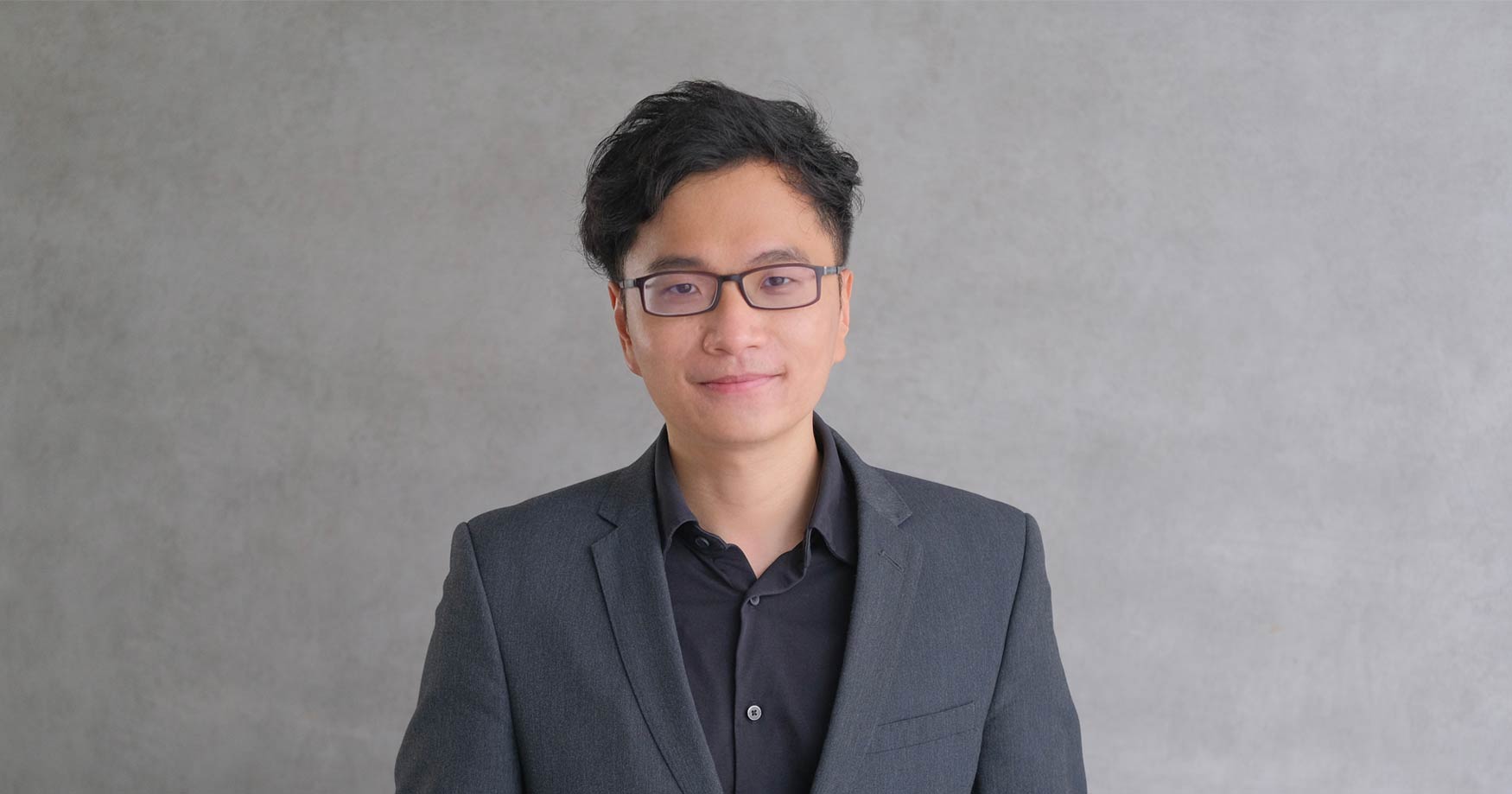
CONSTRAINTS/CREATIVITY considers the humanistic thread connecting disparate cultures across time and space. This collection of 10 original works from composer Kai-Young Chan sets ancient Chinese lyric poetry, contemporary literature, and religious texts to moving choral music.
Today, Kai-Young is our featured artist in the “Inside Story,” a blog series exploring the inner workings and personalities of our composers and performers. Read on to learn about his childhood experiences playing music in Hong Kong, and his sound advice for composers…
What emotions do you hope listeners will experience after hearing your work?
Most of my works, both instrumental and vocal, draw inspiration from the Cantonese language, aiming to provoke diverse experiences for Cantonese speakers and non-speakers.
For Cantonese speakers, I hope to contribute to a growing body of contemporary classical work in Cantonese that allow audiences to experience the art form in their mother tongue — a language that has long been under-represented in the classical scene. This applies also to my instrumental works where the text is not explicitly present — instead, the instruments play musical materials crafted from Cantonese contours. By working with the hidden Cantonese texts in the works — ancient Chinese poetry, crowd-sourced speech recordings, and other thematic phrases — melodies, harmony, timbre, and textures created out of the language. I hope that audiences and musicians alike will be able to find relevance and resonance when hearing music composed in or inspired by their native language.
For those unfamiliar with the language, I also hope that my works can serve as an entry point to explore the qualities of tone languages and embark on cultural explorations and conversations. Ultimately, I aim to foster connections through music, celebrating the richness of Cantonese heritage while inviting others into this vibrant sound world.
Tell us about your first performance.
The first public performance of my work occurred during my undergraduate junior year as in 2010. I composed a piece called “Downstream” for a woodwind quintet, specifically for the Hong Kong Wind Karamata, then the ensemble-in-residence at my school. At that time, I was a student minoring in music, just embarking on my journey in composition. The selection process for performance was competitive, so I was jaw-dropped and extremely thrilled when I received the email announcing my selection.
While I wouldn’t share that piece today, it played a pivotal role in shaping my future. It became part of my portfolio for graduate school applications, ultimately helping me secure a place in a program where I had the privilege to study under my most inspiring mentor. Looking back, I am grateful I took that first step into the world of composition.
Take us on a walk through your musical library. What record gets the most plays? Are there any “deep cuts” that you particularly enjoy?
Among my most played genres are classical, Cantopop, and musical theatre. I often start with a piece by Hisaishi, Lachenmann, Mahler, Ravel, Reich, Sciarrino, Sondheim, Stravinsky, Takemitsu, Yoshimatsu — or with any work done by performers such as the Ensemble Intercontemporain, Mivos Quartet, JACK Quartet, Tenebrae Choir, The Crossing, Roomful of Teeth — and see where the algorithm takes me.
The most played record has been Sunday in the Park with George by Stephen Sondheim. It’s the kind of work that reveals new details with every listen. The clever music, the captivating drama, the witty lyrics, nuanced text-painting, the pointillism evident across all parameters — echoing Seurat’s technique — and the overarching structure all reflect pure genius. This is such a moving and contemplative work for artists with way too many quotable lines and lessons, often though-provoking, at times consoling.
Here are a two of my favorites:
“The art of making art is putting it together bit by bit.” “Every minor detail is a major decision. Have to keep things in scale. Have hold to your vision.”
– Chromolume #7
“Anything you do, let it come from you. Then it will be new.”
– Move On
What were your first musical experiences?
Like many kids in Hong Kong, I started playing the piano at a young age. I mostly practiced alone and played for my teacher weekly, with few opportunities for public performance. That changed when I picked up the erhu — the two-stringed Chinese instrument — upon entering secondary school. It was a suggestion from my piano teacher, who believed that training in string instruments would enhance my musicality.
After about three years of learning the instrument, I was recruited to play in the school’s Chinese orchestra (an orchestra comprised of Chinese instruments). My time with the orchestra — both as a performer and as an alumni trainer — remains one of my fondest memories. Most weeks, we had two tutti rehearsals and at least one sectional rehearsal, and the schedule got even more intensive as we approached competitions and public performances. I made some of my closest friends through the orchestra, and we remain close to this day (after more than two decades!)
Since we grew close through playing beautiful music composed by living composers, this experience inspired my younger self to write music, with hopes that someday my music could foster connections and friendships in other parts of the world.
Where and when are you at your most creative?
I’ve discovered that my most creative moments often strike while I’m showering in the evening. There’s something about that time — perhaps the relaxation of the warm water — that sparks my imagination. If only there were waterproof laptops and manuscript paper, I might never leave the shower!
In reality, I do most of my composing in front of a keyboard or piano, typically during the evenings when I feel most inspired. I find that the late hours — free of work email pings and messages — allow me to dive deep into my thoughts and ideas. Then, during the afternoons, I switch gears to transcription, engraving, and orchestration, often finding a cozy café to work in while enjoying a cup of oat-milk flat white.
What advice would you give to your younger self if given the chance?
One piece of advice I always share with my students is this: no matter how your piece turns out, there will always be people who love it and those who critique it. The key is to just write what you want to hear. Be confident in your work, but remain humble. Always strive to hone your craft and grow as an artist. Embrace feedback as a tool for improvement, but stay true to your unique voice and vision.

Kai-Young Chan earned his Ph.D. in Music Composition from the University of Pennsylvania and has been teaching at The Chinese University of Hong Kong (CUHK) since 2016. His orchestral, chamber, choral, and mixed media works have been performed internationally by groups such as the Pittsburgh Symphony Orchestra, Hong Kong Philharmonic Orchestra, Hong Kong Sinfonietta, Daedalus Quartet, Mivos Quartet, and Hong Kong New Music Ensemble.
Chan has received the CASH Golden Sail Music Award (Hong Kong), Keuris Prize (Netherlands), First Prize of the Robert Avalon Composition Competition (United States), and multiple other international accolades. He organized the first-ever conference on Cantonese Contemporary Music, an event recognized by Radio Television Hong Kong as the Top 10 Music Headlines of 2023 based on the event’s influence on the cultural and academic development in Hong Kong. His work has been showcased at major music festivals, including the International Society for Contemporary Music (ISCM) World Music Days and the International Rostrum of Composers. His compositions are released globally by record labels such as Ablaze, Innova, and Navona Records, with scores published by Edition Peters and Universal Edition.

